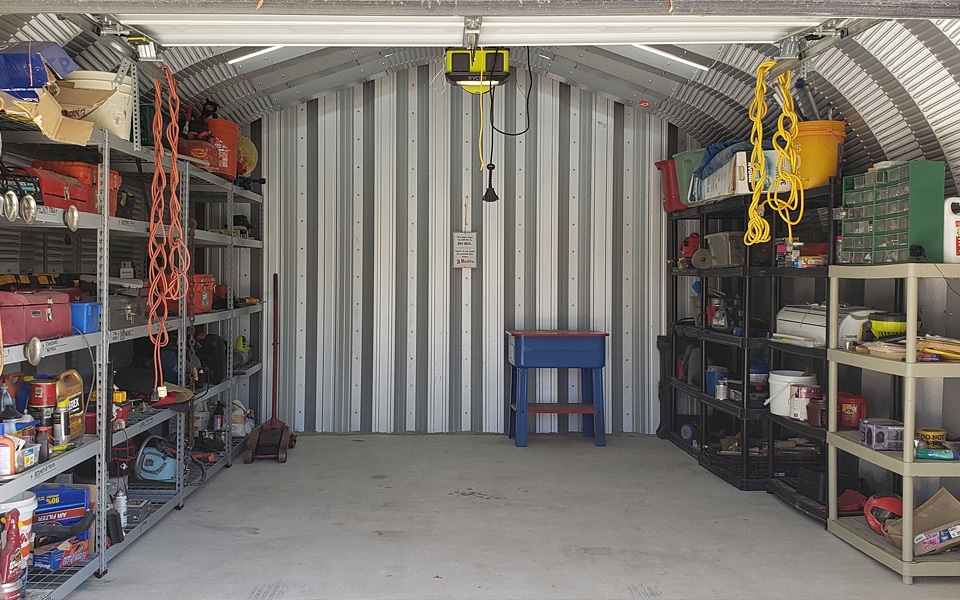Steel workshops are prized for their durability and versatility. When establishing a workspace, people can consider using metal workshop building kits. One crucial element often overlooked is ventilation. Proper ventilation enhances air quality and significantly creates a healthier and more productive environment.
Importance of Adequate Ventilation
In the realm of steel workshops, the importance of adequate ventilation cannot be overstated. Beyond the structural benefits of steel, maintaining a workspace with optimal air quality is paramount. Adequate ventilation removes fumes, dust, and excess heat, creating a comfortable and safe working atmosphere. Neglecting this aspect can lead to respiratory issues and overall discomfort, impacting productivity and well-being.
Ventilation System Options
Ventilation solutions for steel workshops vary, offering flexibility to cater to diverse needs. Natural ventilation utilizes openings such as windows and vents, harnessing natural airflow. Mechanical ventilation employs fans and ducts for controlled air movement. Hybrid systems combine both approaches, offering a comprehensive solution. The choice depends on factors such as workshop size, geographical location, and the nature of work.
Prefab Steel Kits for Efficient Workspaces
Prefab steel building kits emerge as efficient solutions when considering the construction of a steel workshop. Their streamlined design facilitates easy assembly, offering a quick and cost-effective means of establishing a well-ventilated workspace. The modular nature of these kits adds a layer of versatility, aligning seamlessly with the dynamic requirements of modern workspaces and providing adaptability for evolving needs.
Utilizing Filtration for Cleaner Air
Beyond ventilation, maintaining good air quality within a steel workshop involves integrating effective filtration systems. Dust and particulate matter, common byproducts of metalworking activities, can pose health risks. A dual approach is achieved by employing air filtration units in tandem with ventilation, ensuring fresh air circulation while efficiently removing contaminants. This synergy contributes significantly to sustaining a clean and healthy workshop environment.
Prioritizing Safety in Ventilation Design
In the pursuit of a well-ventilated steel workshop, safety takes center stage. Implementing robust safety measures in ventilation design is essential for mitigating risks associated with metalworking activities. This includes using fire-resistant materials, maintaining sufficient spacing between machines to prevent overheating, and incorporating emergency ventilation systems. Collectively, these measures contribute to a safer working environment, fostering a secure and protected space for productive endeavours.
Adapting to Diverse Climates
Consideration of geographical location and local climate is pivotal in determining the effectiveness of a workshop’s ventilation system. Understanding seasonal variations, temperature extremes, and humidity levels is crucial for designing a system that adapts to changing environmental conditions. A well-thought-out ventilation system ensures year-round comfort and productivity, addressing the challenges of different weather conditions. By adapting to diverse climates, steel workshops can maintain functionality and provide a comfortable working environment for individuals in various locations.
Enhancing Workspace Organization
Consider the organizational benefits of incorporating modular steel structures within a workshop. These structures, often compatible with prefab steel building kits, provide a versatile framework for arranging workspaces efficiently. From tool storage to dedicated workstations, modular structures enhance organization, optimizing the workflow within the steel workshop. This strategic use of space contributes to a more productive and streamlined working environment.
Natural Light Integration
An often-underestimated factor in workshop design is the integration of natural light sources. Strategically placing windows and skylights with ventilation systems can enhance the overall atmosphere. Natural light reduces the need for artificial lighting and positively impacts the well-being and productivity of individuals working within the steel workshop. By harnessing the power of sunlight, workspace designers can create an environment that fosters both physical and mental wellness.
Conclusion:
To conclude, creating a healthy workspace in a steel workshop involves a holistic approach, considering ventilation options, safety measures, and climate factors. People can consider using metal workshop building kits that align with prioritizing efficiency and adaptability. Prefab steel building kits emerge as a practical solution, providing a flexible and scalable means of constructing well-ventilated workshops. By investing in the proper ventilation system and utilizing prefab steel kits, individuals can establish workshops that meet functional and health standards, fostering an environment that promotes well-being and enhances overall productivity.


























